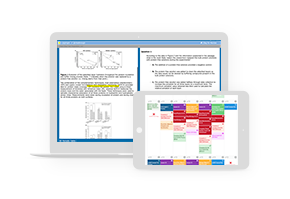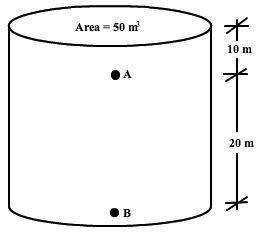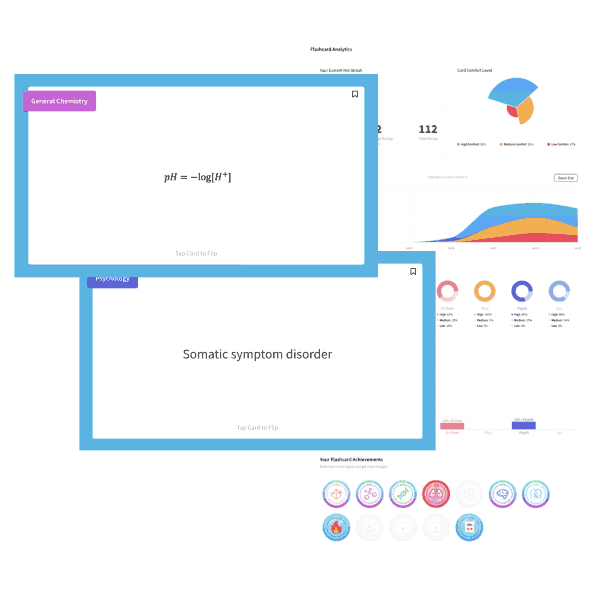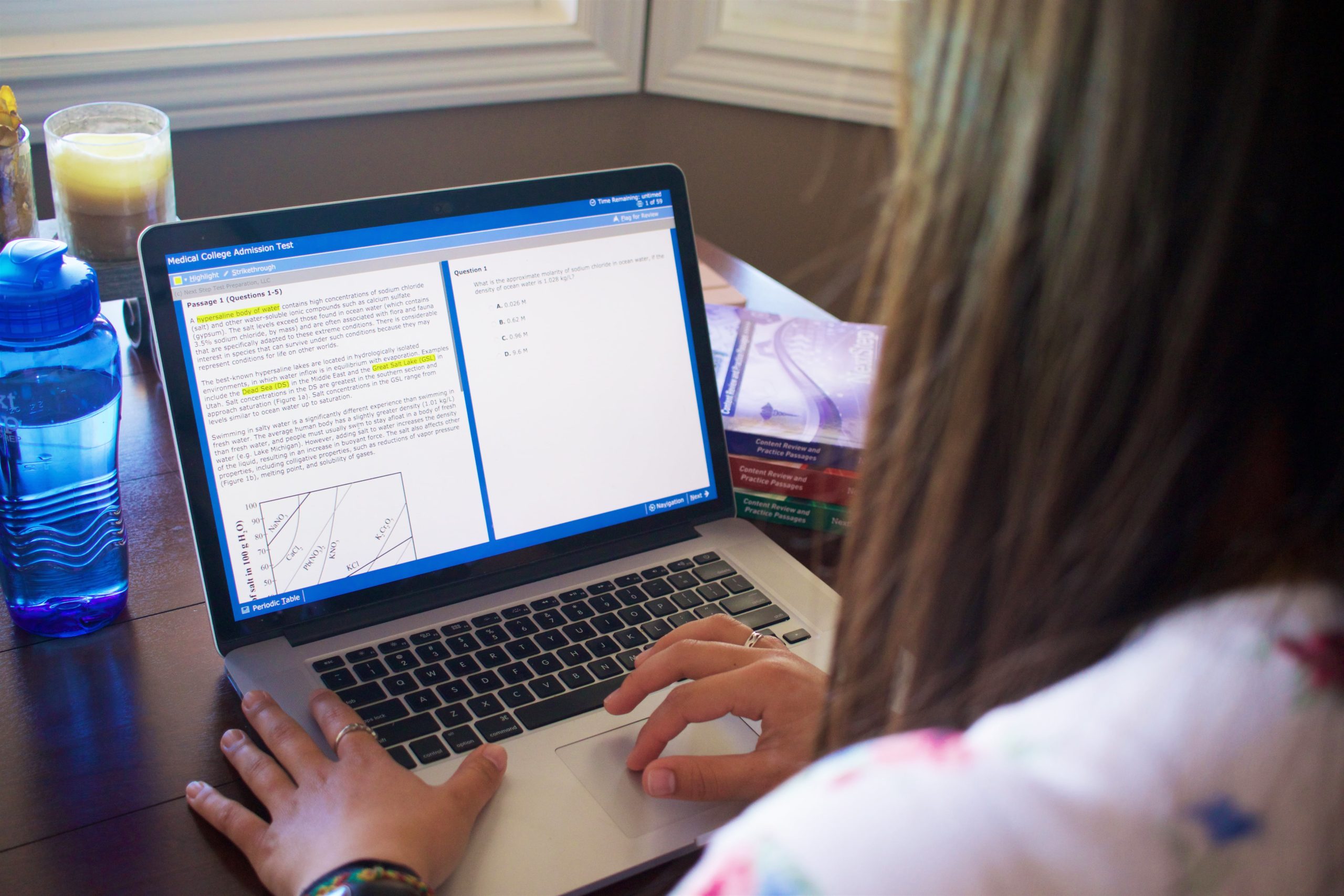Click for Explanation
This question is asking you to determine the ratio of the absolute pressure of Point B to Point A. To answer this question, you must determine the absolute pressure at each point. The absolute pressure is equal to the atmospheric pressure plus the gauge pressure, as shown in the equation, Pabs = Patm + Pgauge.
The atmospheric pressure exerted on the surface of the fluid is equal to 101,000 N/m2 (1 atm). To calculate the gauge pressure at each point, you must apply the formula, Pgauge = ρgh, where Pgauge is the pressure due to the water column of height h, ρ is the density of the fluid, g is the gravitational acceleration constant, and h is the depth.
Pabs (A) = Patm + Pgauge (A)
Pabs (A) = (101,000 N/m2)+ ρwaterghA
Pabs (A) = (101,000 N/m2) + (1000 kg/m3)(10 m/s2)(10 m)
Pabs (A) = 201,000 N/m2
Pabs (B) = Patm + Pgauge (B)
Pabs (B) = (101,000 N/m2)+ ρwaterghB
Pabs (B) = (101,000 N/m2) + (1000 kg/m3)(10 m/s2)(30 m)
Pabs (B) = 401,000 N/m2
Therefore, the PB = 2PA making answer choice A the correct answer. Furthermore, an increase in depth of 10 m in water equals 1 atmosphere. Therefore, the total pressure at A is 2 atm while the total pressure at B is 4 atm.
Want more MCAT practice?
We’ve got options for every schedule and learning style!
From the best online MCAT course created by top instructors with 524+ MCAT scores to the most representative full-length practice exams and private tutoring, we can custom tailor your MCAT prep to your goals!
Not sure which option is right for you? Schedule a free MCAT consultation with an MCAT expert using the form below. No obligation, just expert advice.
Search the Blog

Free Consultation
Interested in our Online MCAT Course, One-on-One MCAT Tutoring or Med admissions packages? Set up a free consultation with one of our experienced Senior Student Advisors.
Schedule NowPopular Posts
-
MCAT Blog What's on the MCAT?
-
MCAT Blog How to Review MCAT Full Lengths

Free MCAT Practice Account
Need great MCAT practice?Get the most representative MCAT practice possible when you sign up for our free MCAT Account, which includes a half-length diagnostic exam and one of our full-length MCAT practice exams.
Learn More







